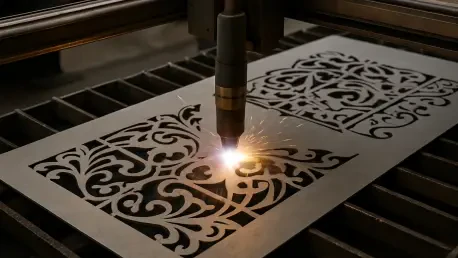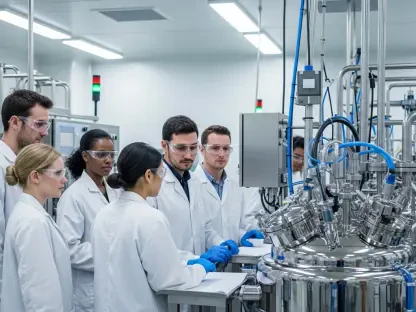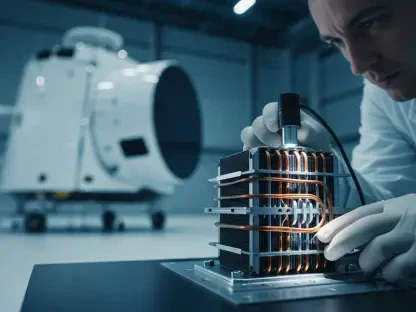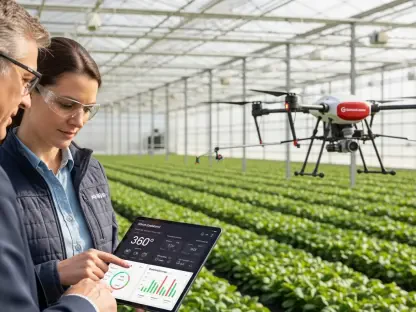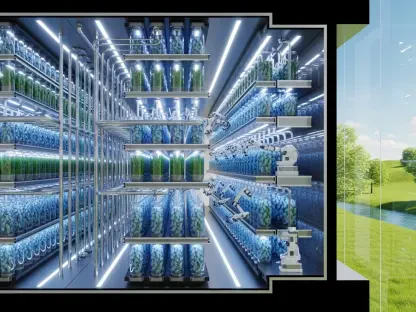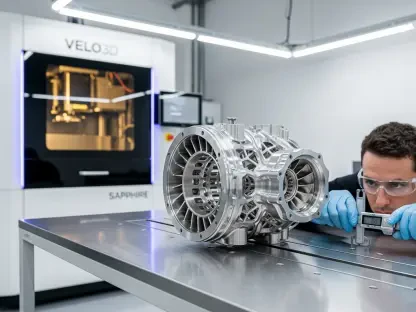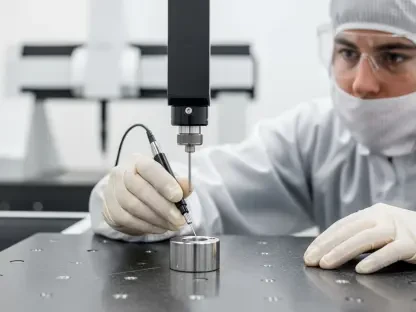In the rapidly advancing landscape of modern manufacturing, a seismic shift is underway as artificial intelligence (AI) transforms the intricate process of programming cutting files for Computer Numerical Control (CNC) machines. These machines, indispensable for tasks like cutting, drilling, and milling materials ranging from metal to composites, depend on precise digital instructions—often in the form of G-code—to execute their operations. For decades, creating these cutting files has been a painstaking endeavor, requiring skilled programmers and sophisticated software, often leading to delays and errors that could derail production. Now, with AI technologies such as machine learning and computer vision stepping into the fray, the industry stands on the brink of a new era where efficiency, accuracy, and accessibility are no longer lofty goals but tangible realities. This technological leap is redefining how manufacturers operate, promising to reshape the competitive dynamics of the sector.
Enhancing Efficiency Through Automation
AI’s integration into CNC cutting file programming marks a significant departure from traditional methods, primarily through its ability to automate complex tasks with unparalleled precision. By leveraging advanced algorithms, AI optimizes toolpaths—the specific routes a cutting tool follows during machining—based on detailed analysis of design specifications, material properties, and machine capabilities. This automation drastically reduces the time once spent on manual programming, minimizes tool wear, and prevents costly collisions. Machine learning models, trained on extensive historical data, predict the most effective cutting sequences, ensuring consistent output with minimal human intervention. The result is a streamlined process that boosts productivity across the board, allowing manufacturers to meet tight deadlines without sacrificing quality.
Beyond mere automation, AI serves as a critical safeguard against errors that can disrupt production and inflate costs. By meticulously scanning G-code for potential flaws such as incorrect parameters or toolpath conflicts, AI systems prevent issues before they manifest on the shop floor. When paired with real-time monitoring through sensors and computer vision, these systems detect deviations like surface imperfections or dimensional inaccuracies during machining, making immediate adjustments to uphold stringent tolerances. This proactive approach to quality control not only mitigates the risk of material damage or tool breakage but also instills confidence in the reliability of the final product. Manufacturers benefit from reduced waste and rework, fostering a more efficient and cost-effective operation.
Pushing Boundaries with Innovative Design
One of the most compelling advancements brought by AI is its role in generative design, a process that reimagines how complex components are conceptualized for CNC machining. Unlike traditional design methods that often struggle with intricate or lightweight structures, generative design uses AI algorithms to produce multiple design alternatives based on defined constraints such as material type, weight limits, and strength requirements. The outcome is often innovative, organic shapes that maximize performance while minimizing material use, a crucial advantage in industries like aerospace where efficiency is paramount. For CNC cutting files, this translates into instructions that are not only precise but also optimized for manufacturability, reducing costs and enhancing the feasibility of cutting-edge designs.
Equally transformative is AI’s ability to democratize access to CNC technology, breaking down barriers that once limited participation to highly trained experts. Through intuitive interfaces and natural language processing, AI-powered platforms enable users with little to no experience in G-code to create accurate cutting files. Small business owners and hobbyists can now input basic designs or even verbal descriptions, with the system handling the technical complexities behind the scenes. This accessibility empowers a broader range of individuals to engage in manufacturing, fostering innovation and entrepreneurship at a grassroots level. As a result, the industry is witnessing a surge in creativity, with smaller players now able to compete in markets previously dominated by large corporations with extensive resources.
Adapting to Real-Time Challenges
AI’s impact on CNC programming extends into the realm of adaptive machining, where real-time data becomes a powerful tool for maintaining operational excellence. By integrating sensors that monitor factors like tool wear, material hardness, and cutting forces, AI enables CNC machines to dynamically adjust parameters such as feed rates and spindle speeds during production. This capability minimizes risks like tool breakage and ensures consistent quality, particularly when dealing with challenging materials like composites that exhibit varying properties. The ability to update cutting files mid-process based on live feedback represents a significant leap forward, ensuring that production remains agile and responsive to unforeseen variables.
This adaptability also addresses a critical need for flexibility in modern manufacturing, where customization and rapid response to market demands are increasingly vital. AI-driven systems allow for seamless modifications to cutting files without halting operations, accommodating last-minute design changes or material substitutions with ease. This dynamic control not only enhances efficiency but also reduces downtime that could otherwise stall production schedules. For industries facing tight timelines and high expectations, such as automotive or medical device manufacturing, this real-time adaptability ensures that CNC machines can keep pace with evolving requirements, delivering precision without compromise.
Transforming the Broader Manufacturing Landscape
The influence of AI in CNC cutting file programming ripples far beyond the confines of toolpath creation, reshaping various facets of the manufacturing ecosystem. Predictive maintenance, powered by AI, anticipates equipment failures before they occur, slashing downtime and extending the lifespan of CNC machines. Similarly, supply chain optimization driven by AI aligns cutting file specifications with material availability, ensuring cost-effective inventory management. Rapid prototyping and customization also benefit, as AI accelerates the generation of cutting files for low-volume runs, catering to niche sectors like medical implants with speed and accuracy. These broader applications underscore AI’s role as a holistic solution for industry challenges.
Sustainability emerges as another key beneficiary of AI’s integration, aligning manufacturing practices with growing environmental imperatives. Through optimized nesting strategies that maximize material usage and energy-efficient toolpaths that cut power consumption, AI helps reduce waste and lower the carbon footprint of production processes. This focus on greener operations resonates with global calls for responsible manufacturing, positioning AI as a catalyst for both economic and ecological progress. As these sustainable practices gain traction, manufacturers adopting AI stand to gain a competitive edge, meeting regulatory demands and consumer expectations for environmentally conscious production.
Reflecting on a Paradigm Shift
Looking back, the infusion of AI into CNC cutting file programming proved to be a defining moment for manufacturing, addressing longstanding inefficiencies with groundbreaking solutions. The automation of toolpaths, real-time error detection, and adaptive machining reshaped how precision and productivity were achieved on the factory floor. Generative design opened new frontiers for innovation, while accessible interfaces empowered a diverse array of users to engage with CNC technology. Beyond programming, AI’s contributions to predictive maintenance, customization, and sustainability redefined industry standards. As the technology matured, it laid the groundwork for even greater advancements, urging manufacturers to explore deeper integration with emerging tools like the Internet of Things for fully autonomous production lines. Embracing these innovations remains essential for staying ahead in a competitive landscape, ensuring that manufacturing continues to evolve with agility and foresight.
